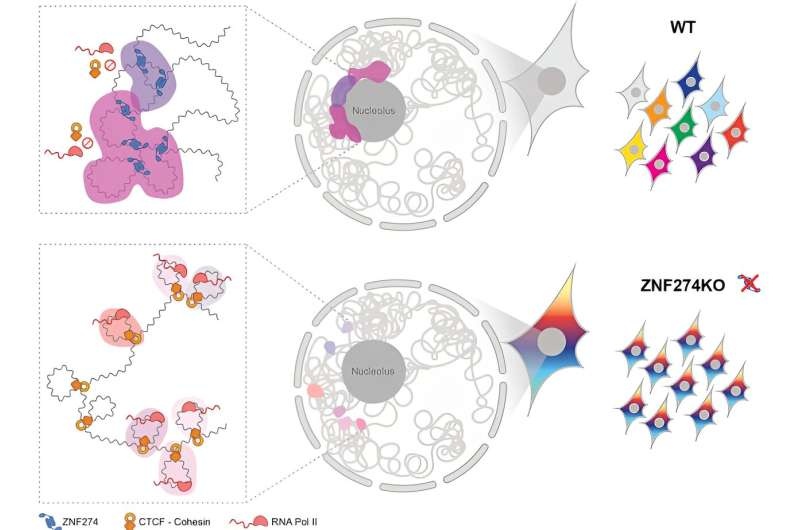Discover the critical role of the protein ZNF274 in maintaining gene clusters in the cell nucleolus, a key player in regulating gene expression. This groundbreaking study sheds light on the complex mechanisms behind gene regulation and their implications for understanding developmental disorders and diseases.

Unraveling the Nucleolus’ Hidden Secrets
The nucleolus, which is a spheroid structure inside the nucleus of every cell, has been for decades known as the place where ribosomes are made. However, more recent studies are now showing the extent to which this organelle regulates gene expression.
The scientists at EPFL have found that the nucleolus is surrounded by regions of genomic DNA termed nucleolus-associated domains (NADs) containing non-transcribed or ‘silent’ genes. They normally hold the reins when it comes to tightly controlling gene clusters along chromosomes, something critical in ensuring that cells do what they are meant to do and development occurs flawlessly. However, the specific gene clusters that are directed to these NADs have not been well understood —until now.
The Protein that Keeps Gene Clusters Quiet
Now, in an article published in Cell Reports*, the research team at EPFL led by Martina Begnis and Didier Trono shows that a essential function of ZNF274 is anchoring certain gene clusters to the cell nucleolus, where they remain turned off.
Cell lines that are devoid of ZNF274 protein were generated using the CRISPR/Cas9 gene editing and the consequences on gene expression as well as genome organization as evaluated. Without ZNF274, once-repressed clusters of genes—including those encoding protocadherins that are vital for brain development—were switched on.
The researchers also discovered that ZNF274 operates through a region of it known as the SCAN domain to connect with the nucleolus. And this link is what locks the genes in our genomes in an ‘off’ position so they don’t inadvertently get flipped on. ZNF274 works as a coordinator of the NAD components and these gene clusters: by mediate between both, ZNF274 makes sure that only when they should be on will be lit up.
Conclusion
Such a study, which pushes back the organizational basis of development to fundamental processes contributing to gene expression is an innovative one. The researchers have uncovered the intricate steps that about 1,800 genes go through to control when and the extent to which they are turned on — a process also known as gene regulation — in cells. The implications of this are considerable, as neural changes in this system contribute to a variety of disorders that involve disturbed gene regulation, ranging from developmental disorders to diseases including schizophrenia and Prader-Willi syndrome. This finding offers new leads for investigating this important cellular process, or processes the findings could inform preferred and therapeutic interventions to alter gene expression.
